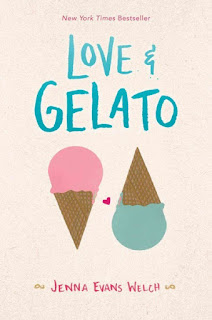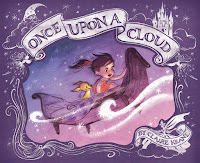What does it mean when a picture book wins the Newbery Medal from an author who primarily writes novels? There is a shift in the way picture books are being used to communicate big picture ideas to small children. From The New York Times' article, "Masters of Prose Warm Up to Children's Picture Books," there is a paragraph that nails the appeal of picture books to authors who normally write novels.
"Picture books, typically written for 3- to 7- year-olds, could represent the next frontier for writers seeking to further expand their audiences by reaching even younger demographic. It also may help them hook impressionable young readers--sometimes before they can read."
Matt de la Peña has done just that in his picture book (illustrated by Christian Robinson), Last Stop on Market Street, which won the Newbery Medal this year. The Newbery is for the greatest contribution to children's literature in America, and this story of kindness, of loving fellow humans from all walks of life, and in seeing the beauty even among the broken and dirty parts of their city, covers the human condition in approximately 32 pages. CJ and his Nana take the bus, but it is more than just a bus ride. It is an adventure. It is filled with fire breathing dragons, beautiful music, and people helping other people.
"Sometimes when you're surrounded by dirt...you're a better witness for what's beautiful."
Matt de la Peña answers some questions about himself and about his book, Last Stop on Market Street.

20xJ: Where are you from? Where do
you live now? Do you do anything else in addition to writing great books?
Matt:
I’m from National City, which is right on the Mexican border in San Diego. It’s
actually the setting of my second book, Mexican
WhiteBoy. For the past ten years, though—wow, TEN YEARS!—I’ve lived in
Brooklyn, New York. In addition to writing, I teach in the low residency MFA
program at Hamline University (alongside superstars like Gene Yang and E.
Lockhart and Laura Ruby and Anne Ursu) and visit a lot of schools around the
country.
20xJ: When did you get your start as
a writer? You went to school on a full basketball scholarship—how did that turn
into writing?
Matt:
I was a secret writer all through high school. Spoken word poetry. I loved the
music I could make with words. I loved basketball growing up, but I also knew
it was my best chance to become the first de la Peña to go to college. Even
when I was young I sort of viewed the game as a path to education. And once I
stepped foot on my college campus, my focus shifted. I took every class I
could. I read every book a professor mentioned. And I continued writing in
secret. During my junior year I submitted a poem to a big college-wide contest.
It was the first time I ever let my work travel beyond my notebook. And it won!
That validation was incredibly powerful. For the first time ever I gave myself
permission to dream . . . I wonder if I
could ever be a writer?
20xJ: You are primarily a writer of
Young Adult novels. Why did you choose to write The
Last Stop On Market Street as a picture book?
Matt:
I have a lot of stories I want to tell. And the more experienced I get, the
more I realize they require different approaches. I grew up in a super working
class family, and I always viewed my context as beautiful—especially once I
left for college. But I didn’t think I could hit that idea head on in a YA novel.
And then I had the opportunity to do a book with Christian Robinson, who I
greatly admire. It was the perfect marriage. I got to write about a kid
learning to perceive himself as beautiful (both physically and contextually),
minus the hormones. If I saddled this story to an older character it would be a
different thing.
20xJ: There need to be more nanas
like CJ’s nana in the world. She sees the bright side to every situtation. When
CJ asks a million questions about the world (like most little kids do), Nana is
patient. When CJ asks, “Nana, how come we don’t got a car?” Nana replies with
“Boy, what do we need car for? We got a bus that breathes fire, and old Mr.
Dennis, who always has a trick for you.” Was there a “nana” in your life that
inspired Nana’s character?
Matt:
My Mexican grandma was much more subtle. She guided young me by patting my knee
when I started to mouth off. I grew to see the power in her silence, though.
She was a powerful presence in my life, but she was also strangely ghostly. If
that makes sense. And then she was gone. Christian Robinson had a grandmother
like Nana, however. I met her as I was writing the book. I saw the strength in
her eyes.
20xJ: The wonderful thing about Last
Stop On Market Street is that it is a story that could take
place anywhere—in Atlanta, Boston, New York, Los Angeles, New Orleans. Where is
Market Street for you?
Matt:
I love when folks claim it as their own Market Street. I recently had a woman
tell me, “I’m so happy you wrote about Newark, New Jersey.” And I told her,
“Yeah. Newark. Exactly.” Truth is, I imagined Los Angeles when I wrote the
book. I lived there for four years and rode the bus everywhere. Christian
imagined San Francisco, where he now lives.
20xJ: I know it must be hard to
choose, but which of Christian Robinson’s illustrations in Last
Stop On Market Street is
your favorite?
Matt:
The dream sequence, when CJ closes his eyes to listen to the music. That
spreads makes me want to cry.
 |
| “CJ’s chest grew full and he was lost in the sound and the sound gave him the feeling of magic.” |
20xJ:
Another tough one, but what was your favorite line or passage to write in Last
Stop On Market Street?
Matt: Okay, this feels weird, praising
my own words, but I like this line: “CJ’s chest grew full and he was lost in
the sound / and the sound gave him the feeling of magic.” I like the music of
that one. I had to fight for the rep of “sound” which is absolutely vital to
me.
20xJ: What were your favorite books
as a child? And/or your favorite books now?
Matt:
Sadly, I wasn’t much of a reader as a kid. I read The House on Mango Street by Sandra Cisneros about a dozen times.
It was so good, I thought, “Why should I read anything else? This one works!” A
couple favorites now: Suttree by
Cormac McCarthy, Between the World and Me
by Ta-Nehisi Coates, This is How You Lose
Her by Junot Diaz, and Bud, Not Buddy
by Christopher Paul Curtis.
20xJ: What is your favorite line in
literature?
Matt:
From McCarthy’s The Road: “Borrowed time and borrowed world and borrowed eyes
with which to sorry it.”
20xJ: On the ALA website, one of the
definitions of the Newbery Medal is that it is a “‘contribution to American
literature for children shall be a book for which children are an intended
potential audience. The book displays respect for children’s understandings,
abilities, and appreciations. Children are defined as persons of ages up to and
including fourteen, and books for this entire age range are to be considered.”
I think everyone ages 0-99 should
read this book. What is your dream for Last Stop On Market Street? In
other words, how would you like for it to inspire children?
Matt:
I feel like one of the most important things you can do as a writer is let go.
Once a book leaves your computer it is no longer fully yours. My dream is for
readers to interact with my stories, period. What an honor. But it is the reader
who makes a book special. So, it’s hard for me to speak to this with much
insight. I will say this, however, it’s important to me that diverse readers
encounter diverse characters. This is a validating experience.
20xJ: You are also the first Latino
male to be awarded the Newbery. This recognition of a Latino author has been a
long time coming, but hopefully, as racially diverse as America is, this will
continue to shape the way books are made and for whom they are made.
What does winning the Newbery mean to
you, and how do you hope this encourages other Latino authors as well as other
diverse authors?
Matt: Winning the Newbery
is a humbling, humbling experience. It means a committee of really thoughtful
readers liked my book. A lot. How insane is that? And I’m definitely proud to
be a Latino writer. I
hope all the brilliant Latino/Latina writers of the past and present
view this as a recognition or our diverse community and that it inspires
young Latinos coming up to read their way through the world and consider
a path in the arts.
20xJ: In a society of consumerism, a
society that wants more things, we see CJ’s complaints
that reflect that way of life (why can’t he have an iPod like the teenagers on
the bus)? You write about connecting to human people. On the bus, there is a
man with tattoos, a woman with a jar of butterflies, a blind man, and a man
playing guitar.
Once CJ closes his eyes, he is
transported. “CJ’s chest grew full and he was lost in the sound and the sound
gave him the feeling of magic.”
How does writing and music connect
people? What do you hope to accomplish or write next?
Matt:
Music is so visceral. But not just the music of music. The music of poetry is
like that, too. I wish more people could see the poetry in their lives. I wish we
would all be more comfortable in silence, in boredom, in our work. There’s
poetry all around us. Even some forms of sadness are bursting with poetry.
I
can’t wait for my next picture book to come out. It’s called Carmela Full of Wishes, and it follows a
young Mexican girl on a trip to do errands with her brother. She, too, is in
search of poetry.
Thanks, Matt!

























